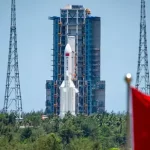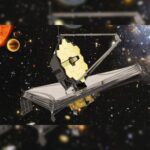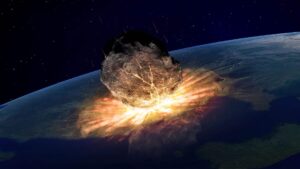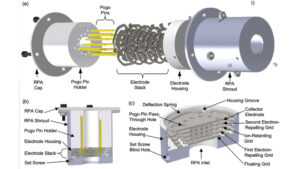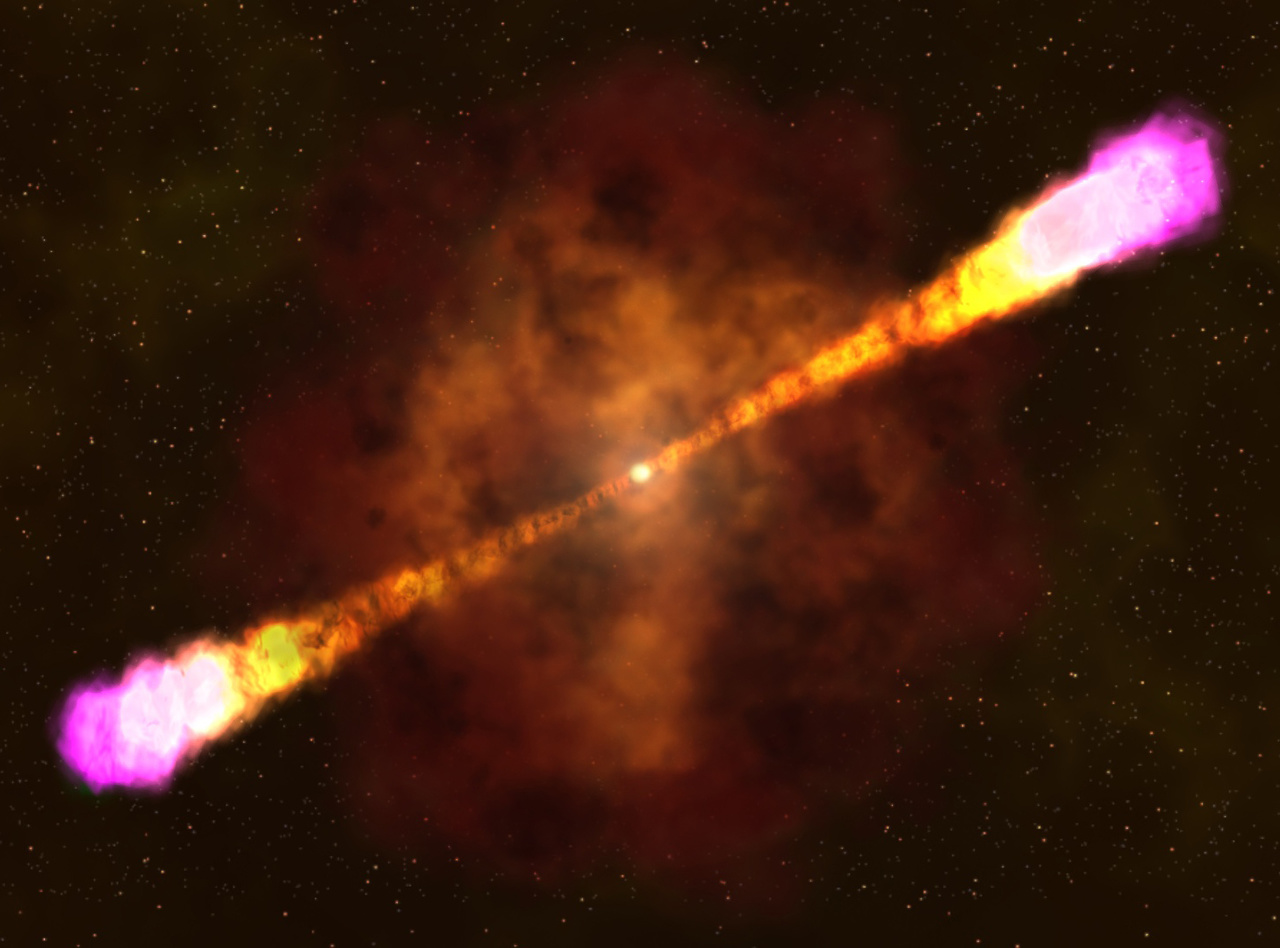
Observation of planetary stars that fainted helped weigh the millisecond pulsar companion.
The busy star, collapsed has torn and consumed almost all the mass of his star friends and, in the process, grew into the toughest neutron star that was observed to date. It rotates 707 times per second – making it one of the fastest rotating neutron stars in the Milky Way galaxy.
Considering the Neutron Star Determination of this record, which is at the top of the charts in 2.35 mass of the sun (our sun mass), helping astronomers understand the strange quantum conditions in these very dense objects. If they become much heavier than that, the neutron star collapses completely and disappears as a black hole.
We know about how the material behaves in nuclear density, as in the nucleus of uranium atoms, “said Alex Filippenko, a leading astronomy professor at the University of California, Berkeley. “Neutron stars are like a giant nucleus, but when you have a sun mass one and a half of these items, which is around 500,000 mass of the earth from the nucleus all attached together, it is not clear how they will behave.”
According to Roger W. Romani, Professor of Astrophysics at Stanford University, Neutron Stars are very dense, with 1 inch cubic weighing more than 10 billion tons. This means that their core is the most populous material in the short universe from the black hole, which is impossible to learn because they are hidden behind the horizons of their event. Therefore the Neutron Star, Pulsar appointed by PSR J0952-0607, is the most populous object seen on earth.
The extreme sensitivity of the 10 -meter Keck I Telescope in Maunakea in Hawaii is what makes it possible to measure the mass of neutron stars. This records the visible light spectrum from the hot shining companion star, which is now reduced to the size of a large gas planet. Located towards the constellation constellation of the constellation, the stars are about 3,000 light years from the earth.
Found in 2017, PSR J0952-0607 is called “Black Widow” Pulsar. Their name is an analogy with a tendency for a female black widow to consume men who are much smaller after marriage. Hoping to determine the upper limit of how large stars/pulsar neutrons can grow, Filippenko and Romani have studied the black widow system for more than a decade.
By combining this measurement with several other black widows, we show that neutron stars must reach at least this mass, 2.35 plus or minus 0.17 of the sun,” said Romani, who is a Professor of Physics in Humanitarian Schools and Stanford Sciences and members of the Kavli Institute for Astrophysics and Particle Cosmology. “In turn, this gives some of the strongest obstacles to the material property several times the density seen in the nucleus. Indeed, many models of solid material physics are excluded by this result. “
If 2.35 the mass of the sun is close to the upper limit of the neutron stars, the astronomers say, then the interior tends to be neutron soup and quark up and down – the constituents of protons and normal neutrons – but not exotic material, such as quarks or “strange” kaons, which are particles containing strange quarks.
The high maximum mass for neutron stars shows that it is a mixture of their nuclei and quarks that are dissolved up and down to the core, “said Romani. “This excludes many proposed material conditions, especially those that have an exotic interior composition.”
Student Postgraduate Romani, Filippenko, and Stanford, Dinesh Kandel, are fellow writers of papers who describe the results of the team published today (July 26, 2022) at the Astrophysical Journal Letters.
How big can they grow?
Astrophysics generally agree that when stars with a nucleus greater than about 1.4 mass of the sun collapsed at the end of their lives, it forms a solid and solid object with interior under high pressure so that all atoms are destroyed together to form a sea of neutrons and their subnuclear constituents, quark. These neutron stars are born spinning, and although too dim to be seen in visible light, expressing themselves as pulsar, emitting rays of radio light, x-rays or even gamma-rays of flash earth when they rotate, as rotated Lighthouse beam.
Pulsars “ordinary” rotates and blinks about once per second, on average, speeds that can be easily explained given the normal rotation of the star before collapse. But some pulsar repeats hundreds or up to 1,000 times per second, which is difficult to explain unless the material has fallen to the neutron star and rotates it. But for some millisecond pulsar, no companion is visible.
One of the possible explanations for isolated millisecond pulsar is that each of them has ever had friends, but there is nothing.
“The evolutionary route is really interesting. Double exciting point, “said Filippenko. “When a companion star develops and starts to become a red giant, the material spills into the neutron star, and it turns the neutron star. By spinning, now it becomes very energized, and the wind particle starts to come out of the neutron star. The wind then touched the donor star and began to release the material, and over time, the mass of the donor star was reduced to the planet, and if even more time passed, it disappeared altogether. So, that’s how the single millisecond pulsar can be formed. They are not alone to start – they must be in a binary couple – but they gradually yawn their friends, and now they are alone. “
Pulsar PSR J0952-0607 and his vague companion star support this origin for millisecond pulsar.
“Objects like these planets are dregs from normal stars who have donated mass and corner momentum, turning their pulsar pairs to the millisecond period and increasing their masses in the process,” Romani said.
In the case of cosmic intelligence, Black Widow Pulsar, who has devoured most of his partners, is now heating and evaporating the companion to the planet’s masses and may be total destruction, “Filippenko said.
Profit pulsar -profit including redback and tidarrens
Finding the black widow pulsar where the companion is small, but not too small to detect, is one of the few ways to weigh the neutron stars. In the case of this binary system, a companion star – now only 20 times the mass of Jupiter – distorted by the mass of the neutron star and is locked tidal, similar to the way we are locked in the orbit so that we only see one side. The side facing the neutron star is heated to a temperature of around 6,200 Kelvin, or 10,700 degrees Fahrenheit, a little hotter than our sun, and is bright enough to be seen with a large telescope.
FilipPenko and Romani changed the telescope Keck I on PSR J0952-0607 on the last six years, each time observing with a low resolution imaging spectrometer in 15 minutes to capture a faint companion at certain points in a 6.4 hour orbit 6.4 The hour is from Pulsar. By comparing the spectrum with stars like the same sun, they are able to measure the speed of the orbitals of the companion stars and calculate the mass of the neutron star.
Filippenko and Romani have examined around the dozen of the black widow system so far, although only six bright companion stars to let them count the masses. All neutron stars involved are less massive than Pulsar PSR J0952-060. They hope to learn more of the black widow pulsar, as well as their cousin: Redbacks, named Australia, equivalent to Pulsar Widows, who have friends closer to a tenth of the mass of the Sun; And what Romani was nicknamed Tidarrens-where the companion was about one hundredth of the mass of the sun-after relatives of the black widow spider. Male from this species, Sularren Sisyphoides, is about 1% of female sizes.

